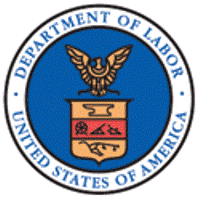
By Anthony Kaylin, courtesy SBAM Approved Partner ASE
The U.S. Department of Labor Wage and Hour Division published the final exempt regulations. These regulations have gone through various transformations from the Obama Administration to the Trump Administration. The last time these rules were changed was in 2004 under the Bush Administration. The final rule will be effective on January 1, 2020. With the final rule being published, it does the following:
1. Raises the “standard salary level” from the currently enforced level of $455 to $684 per week (equivalent to $35,568 per year for a full-year worker and slightly more than the proposed regulation requirement of $679 per week)
2. Raises the total annual compensation level for “highly compensated employees (HCE)” from the currently enforced level of $100,000 to $107,432 per year
3. Allows employers to use nondiscretionary bonuses and incentive payments (including commissions) that are paid at least annually or on a more frequent basis to satisfy up to 10% of the standard salary level, in recognition of evolving pay practices
4. Revises the special salary levels for workers in U.S. territories and in the motion picture industry
It set the standard salary level by applying the 2004 methodology to current CPS data. Using pooled 2018/2019 CPS MORG data to represent the July 2018 through June 2019 period, a salary level of $684 corresponds to the 20th percentile of earnings for full-time salaried workers in the South Census Region and/or in the retail industry. Wage and Hour believes that using this approach will maintain the prominence of the duties test by ensuring that the salary level alone does not disqualify from exemption a substantial number of employees who meet the duties test. That was one of the main arguments against the Obama era regulations.
Employers may make a catch-up payment in the event that an employee doesn’t receive enough in nondiscretionary bonuses and incentive payments (including commissions) in a given year to remain exempt. The employer has one pay period to make up for the shortfall (up to 10% of the standard salary level for the preceding 52-week period). Any such catch-up payment will count only toward the prior 52-week period’s salary amount and not toward the salary amount in the 52-week period in which it was paid. If the employer chooses not to make the catch-up payment, the employee would be entitled to overtime pay for any overtime hours worked during the previous 52-week period.
To determine the new HCE total annual compensation requirement, the Department used the pooled 2018/19 CPS MORG data to ascertain that the 80th percentile of all full-time salaried workers in 2018 is equal to $107,432. In the proposed regulations, Wage and Hour used the 90th percentile which equated to $147,414 per year.
Wage and Hour did not made changes to how employers may use bonuses to meet the salary level component of the HCE test. Therefore, under the final rule, employers must pay workers at least the standard weekly salary level of $684 per week on a salary or fee basis, while the remainder of the total annual compensation may include commissions, nondiscretionary bonuses, and other nondiscretionary compensation. According to Wage and Hour, it determined that it would not be appropriate to permit employers to also use nondiscretionary bonuses and incentive payments to satisfy the weekly standard salary amount; therefore, employees must receive at minimum $684 per week before any bonuses, etc.
In the final rule the Department reaffirms its intent to update the earnings thresholds more regularly in the future through notice-and-comment rulemaking as opposed to every four years per the proposed rule. Wage and Hour estimates that the number of currently exempt workers, who the Department estimates at 1.3 million, will without intervening action by their employers, become eligible for overtime and estimates that workers will receive $298.80 of extra pay each year.
Although most employers have already conducted an FLSA audit on titles and pay in their organizations, it would be a good plan to conduct a final one before the beginning of the year to catch any issues that may not have been caught the first time or may have arisen since the last FLSA audit.